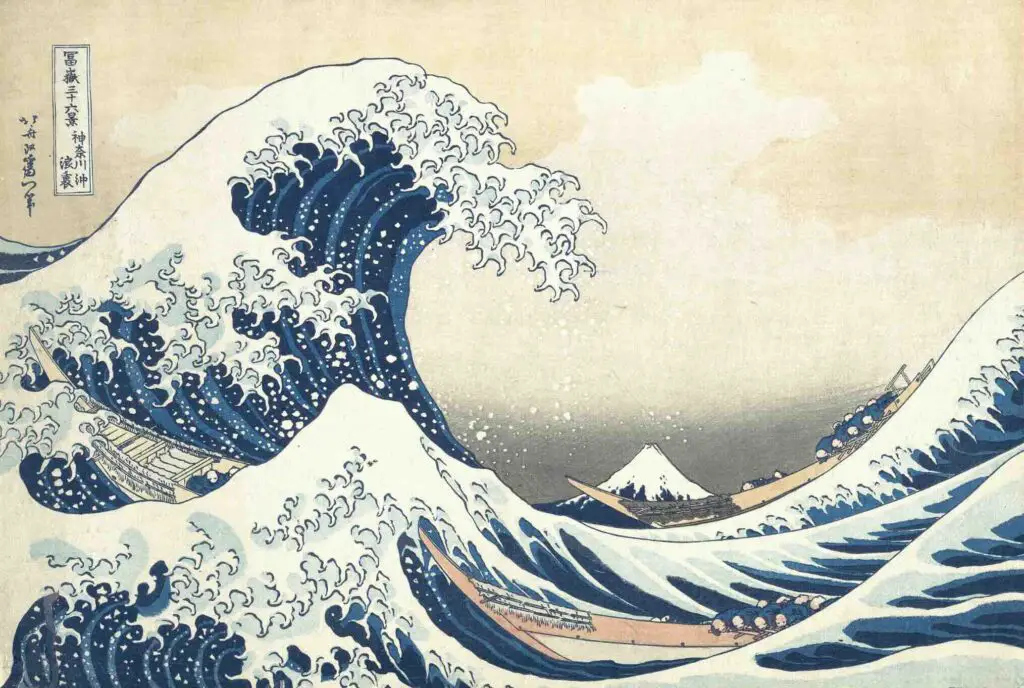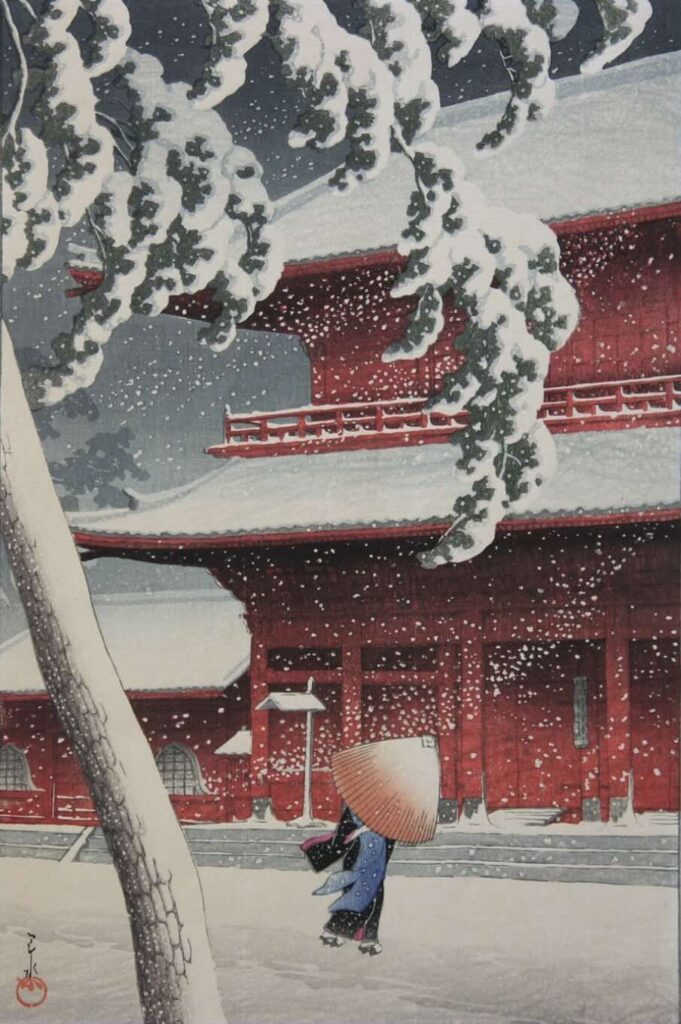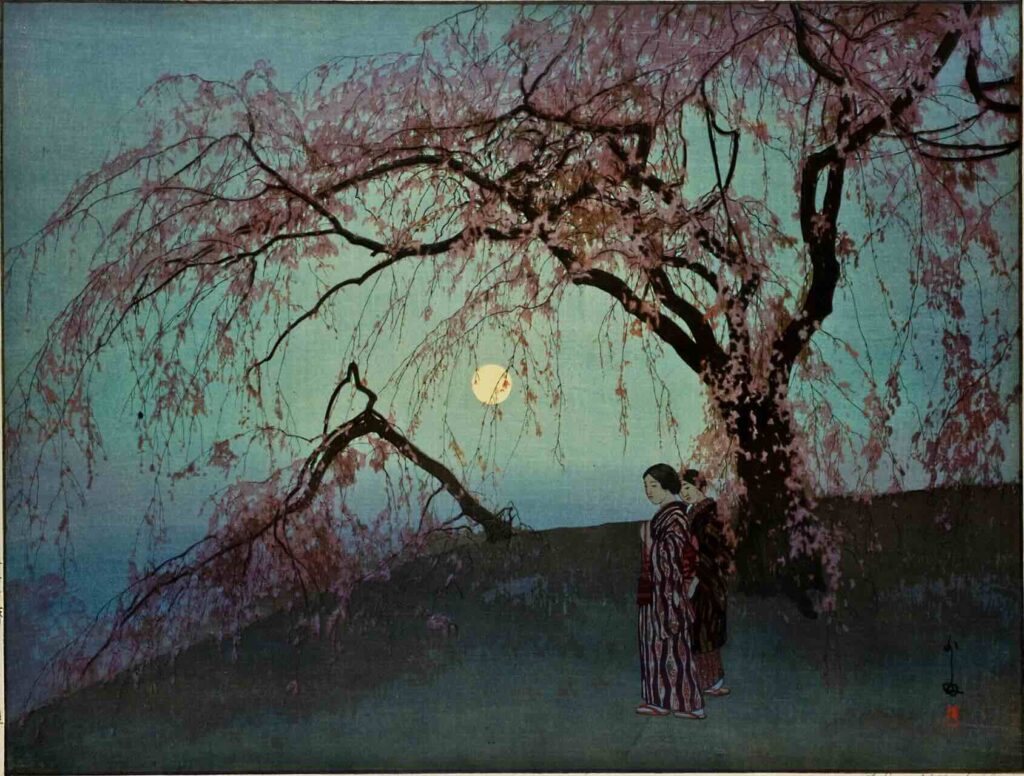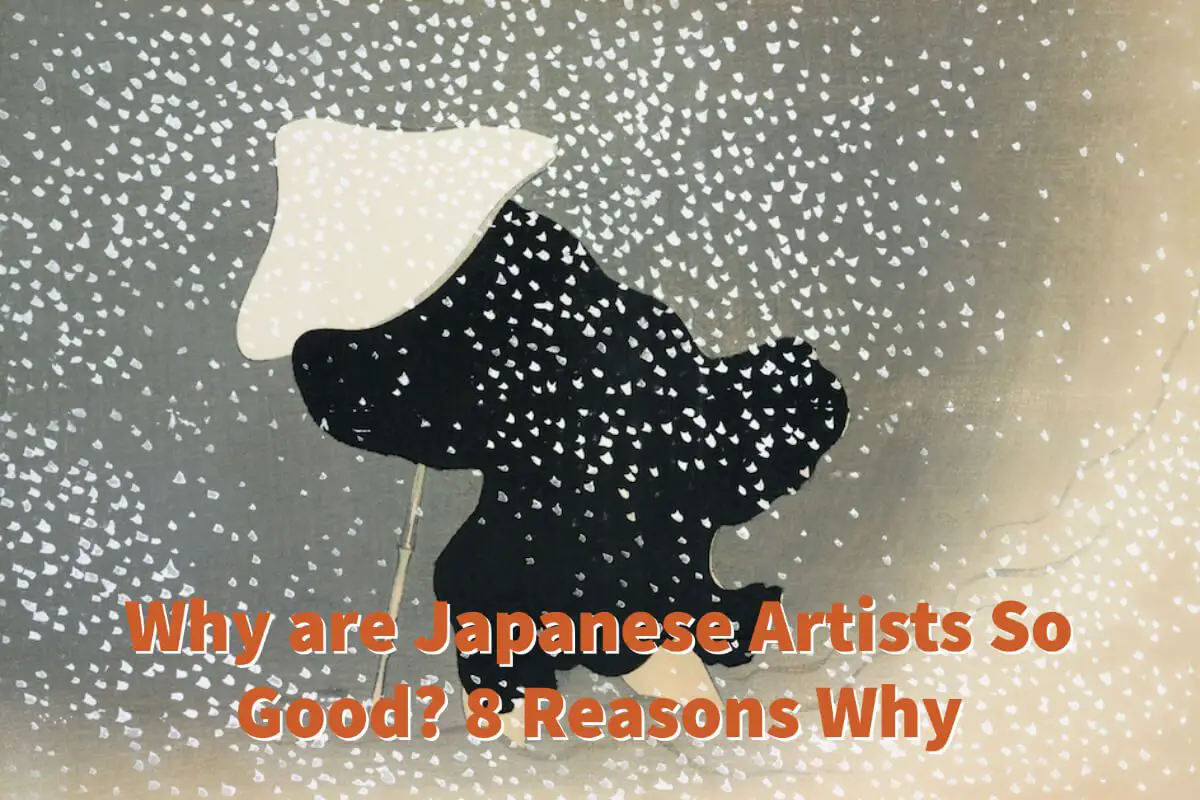Throughout the centuries, Japan has produced some amazing artists. Even today, several Japanese artists are prevalent throughout the world.
Japanese artists are good because Japan has a long history of art being at the forefront of Japanese culture. Japanese artists also believe in not just hard work but also consistent practice. The Japanese artist is exposed to artistic forms as woodblock prints, manga art, and anime art.
Table of Contents
- 8 Reasons Why Japanese Artists Continue To Be Such Great Artists.
- 1 – Japan Has a Long, Rich Artistic History
- 2. – History of Japanese Ukiyo-e Woodblock Prints
- 3- Japanese Culture Reflected in Arts
- 4 – The Japanese Believe in Hard Work
- 5. Japanese Believe in Practice Over Pure Talent
- 6- Exposure To Manga Art (Japanese Comic Books and Graphic Novels)
- 7 – Japanese Obsession With Anime (Animation)
- 8 – Examples of Widely Successful Japanese Artists
- Frequently Asked Questions
- Related Content
8 Reasons Why Japanese Artists Continue To Be Such Great Artists.
I am a great fan of Japanese art and Japanese artists. Through my study of Japanese art, I have listed out my top 8 reasons why I believe Japanese are such great artists.
1 – Japan Has a Long, Rich Artistic History
The country of Japan has existed for over 1000 years; Japan has a long and rich artistic history. The first art produced in Japan is from the 7th and 8th centuries; this early Japanese art was connected to Buddhism.
The early Japanese art consisted of painting, calligraphy, architecture, pottery, sculptures, bronzes, jade carvings, and other fine decorative and visual arts. Japan has had a long and rich history of art and artistic development.

2. – History of Japanese Ukiyo-e Woodblock Prints
One of Japan’s most important art movements was the ukiyo-e woodblock prints. This is not only a fascinating Japanese art form, but it is one that also has affected western art movements and many western artists.
Famous artists such as Vincent van Gogh and Claude Monet were fans of the Japanese ukiyo-e woodblock prints. It was Claude Monet who once explained his artwork to an art critic when he said
..If you insist on forcing me into an affiliation with anyone else for the good of the cause, then compare me with the old Japanese masters; their exquisite taste has always delighted me, and I like the suggestive quality of their aesthetic, which evokes a presence by a shadow and the whole by a part.”
CLaude Monet
I am also a huge fan of the Japanese ukiyo-e woodblock artists. You can read my blog on What Is A Japanese Woodblock Print? by clicking here.

3- Japanese Culture Reflected in Arts
A lot of the Japanese culture is also reflected in Japanese art. Over the centuries, Japanese artists aligned their cultural and religious beliefs with their art; this is why much of the Japanese art reflects Japanese culture.
This helped the development of Japanese art and even today helps influence Japanese artists as they continue to produce works of art.
Japanese artists also showed much of the Japanese daily life in their art. One of the most famous woodblock prints is Hokusai’s woodblock print, The Great Wave Off Kanagawa. Even today, this woodblock print is trendy.
You can discover more about Hokusai and The Great Wave by reading The Great Wave Off Kanagawa by Japanese Artist Hokusai (1790-1849) by clicking here.
4 – The Japanese Believe in Hard Work
Hard work in Japan is not just something you do; it is inherent in the culture of Japan. Japan is the birthplace of Karoshi, which means “death from overwork.” The word Karosh was invented to describe the deaths caused by work-related stress and pressures.
This work ethic no doubt influenced the Japanese artist and their artwork. Famous Japanese artists today are known to be extremely hard workers. Take, for example, one of the most well-known Japanese artists, Yayoi Kusama.
Even though Yayoi Kusama is dealing with mental illness, she goes to work every day and puts in long working hours. Yayoi Kusama continues to produce an astonishing amount of artwork – all by herself.
You can learn more about Yayoi Kusama by reading our blog What Type Of Artist Is The Japanese Artist Yayoi Kusama? by clicking here.
5. Japanese Believe in Practice Over Pure Talent
In the West, many people believe to be an artist, you must be born with an extraordinary amount of natural talent. However, in Japan, the Japanese believe skill is important, but hard work and practice can also help you achieve your goals.
This is a little bit different from how many of us view artistic skills. A Japanese views artistic skills as something you can learn and master through practice and hard work.
People can learn to draw not because they are born with the talent but because they can practice and work hard at drawing. In other words, artistic skills can be learned and mastered with practice and hard work.
6- Exposure To Manga Art (Japanese Comic Books and Graphic Novels)
One influence of Japanese art is Manga art or Japanese Comic Books and Graphic Novels. This art continues to influence many Japanese artists.
Manga art continues to be so influential for artists around the world. Over the last few years, Manga art has continued to gain popularity, even in the United States. For example, Udemy, the popular online school, offers an art course on drawing Manga art.
7 – Japanese Obsession With Anime (Animation)
The Japanese also have an obsession with anime or animation. Much of the animation taking place in the West has influences from the Japanese form of anime or animation.
No doubt, many Japanese children have grown up learning to draw manga and watching anime. This of course, has influenced Japanese art including many contemporary Japanese artists.
A Japanese artist whom you can see this influence of Manga and Anime is the wildly successful Japanese artist Takashi Murakami. You can see some references to anime and manga in Takashi Murakami’s work.
You can learn more about Takashi Murakami by reading Why is Takashi Murakami So Popular? The Japanese Artist Takashi Murakami by clicking here.

8 – Examples of Widely Successful Japanese Artists
Japan has examples of some wildly successful international artists who are successful in Japan and worldwide. Two of them that come to mind are Takashi Murakami and Yayoi Kusama – both shown in major galleries and museums worldwide. They have licensing deals with companies like Louis Vuitton and others.
Throughout the centuries, Japan has continued to produce amazing artists and artwork. Many of the world’s most famous and popular artists are Japanese. I expect we will continue to see many great artists from Japan.
I love the story of 17th-century Japanese Woodblock Artist Utagawa Kuniyoshi. Success did not come to him right away. It was through his determination and hard work that he finally became successful as an artist.
You can learn more about Utagawa Kuniyoshi by reading Who Is the Japanese Woodblock Print Artist Utagawa Kuniyoshi (1798 – 1861)? by clicking here.
As an artist, I am truly inspired by all of Japanese artists’ hard work and talent. One of the things I learned from these Japanese artists is not to be afraid of hard work and practice; these two things can help your success as an artist.
Anita Louise Art is dedicated to art education, great artists, and inspiring others to find and create their art. We love art that uplifts and inspires. #ArtToMakeYouSmile! #ArtToMakeYouHappy!
If you are interested in seeing any of my art, you can find out more by clicking here. If you are interested in what inspires me and my paintings, you can discover more by clicking here.
We have a free newsletter and would love you to be part of our community; you can subscribe to the newsletter by clicking here. If you have any questions, I would be happy to talk to you. You can reach me, Anita, by clicking here.
Subscribe to our Anita Louise Art YouTube Channel filled with great videos and information by clicking here.
Join us for our podcast “5 Minutes With Art.” Spend just 5 minutes a week with us to discover and learn about great art and artists. You can find out more about our podcast by clicking here.
Frequently Asked Questions
Why are Japanese artists so highly regarded globally?
Japanese artists have a rich cultural heritage that places a strong emphasis on artistic expression. This, combined with their dedication to craftsmanship and attention to detail, contributes to their global acclaim.
What historical factors contribute to the excellence of Japanese artists?
Japan has a long history of valuing and nurturing artistic talent. Traditional art forms such as calligraphy, tea ceremonies, and Ikebana have played a crucial role in shaping the artistic sensibilities of the Japanese people.
Is there a cultural aspect that influences Japanese artists’ creativity?
Yes, the Japanese culture emphasizes harmony, balance, and simplicity, which are reflected in their art. This cultural influence contributes to the unique and aesthetic qualities found in Japanese artistic creations.
How does the concept of “kaizen” impact the work ethic of Japanese artists?
The concept of “kaizen,” which means continuous improvement, is deeply ingrained in Japanese culture. Artists in Japan embrace this philosophy, constantly seeking to refine and enhance their skills through consistent practice and refinement.
Why do Japanese artists excel in traditional art forms like woodblock prints?
Traditional art forms like woodblock prints have been passed down through generations in Japan. The dedication to preserving and evolving these techniques has led to a mastery that is evident in the work of contemporary Japanese artists.
How does exposure to manga and anime influence Japanese artists’ creativity?
The popularity of manga and anime in Japan provides artists with a diverse range of visual storytelling techniques. Exposure to these dynamic art forms fosters creativity and innovation among Japanese artists.
Are Japanese artists encouraged to pursue diverse artistic expressions?
Yes, Japanese artists are often encouraged to explore various artistic mediums and expressions. This openness to experimentation allows for a rich and varied artistic landscape in Japan.
How does the Japanese educational system contribute to the development of artists?
The Japanese education system places importance on the arts, ensuring that students are exposed to various forms of artistic expression from a young age. This early exposure contributes to the cultivation of artistic talent.
Are there cultural values that Japanese artists incorporate into their work?
Japanese artists often incorporate values such as respect for nature, simplicity, and a deep connection to their surroundings into their creations. These cultural values add depth and meaning to their artwork.
In what ways do Japanese artists blend traditional and contemporary influences?
Many Japanese artists seamlessly blend traditional techniques with contemporary themes. This ability to merge the old and the new allows for a unique and evolving artistic expression that resonates globally.
Related Content
How Do You Identify A Japanese Artist’s Signature on Woodblock Prints?
The signature on a Japanese woodblock print is the Japanese characters above or near the red artistic seal or chop. Sometimes the artist would add words behind their own name, such as “designed by.” Other times the artist would use different chops or seals during different periods of their life. Many times the actual artist’s signatures are complicated to read.
You can learn more by reading How Do You Identify A Japanese Artist’s Signature on Woodblock Prints? by clicking here.
What Is The Main Difference Between Japanese and Chinese Art?
The main differences between Japanese and Chinese art include the materials used and how they were executed. Religion played a major role in influencing both Japanese and Chinese art. Both countries were Buddhist, but Japan also had the influence of Shintoism, and China had Confucianism and Taoism.
You can read more by reading What Is The Main Difference Between Japanese and Chinese Art? by clicking here.


